Goblin
The Empire would not function without Goblins, and yet, they are on the bottom of the pyramid.
As seen in
|
“And you’re not getting the goblins to do it?” “Of course he is,” snapped Yathar, “but we had to organize it all first! You there!” he barked crabbily at a passing goblin with a tray of dirty dishes in its claws. “Put those down and take this!” “But sir,” the goblin protested, “me get in big trouble with head cook…” Talgor booted him hard in the rump and he collapsed face first into the tray of dishes. Two cups cracked like eggs. The goblin moaned in dismay. Some nearby orcs and hobgoblins hooted laughter. “You’re going to get in big trouble with us if you don’t do what you’re told!” he snarled. “Now get to it!” “Gul, karr,” gulped the goblin. He left the dishes where they were and picked up a steaming carafe.Goblins are nasty, ill-tempered and cowardly little creatures. They are brutish and abusive to those weaker than themselves, and groveling and sycophantic to those more powerful. And the females, though never really brutish or abusive are equally groveling and sycophantic. The average encountered goblin is about equally strong as a human and just as intelligent, though brash, weak willed and utterly devoid of charisma. In the categories of agility and health, they are naturally dexterous, as much so as elves and with two livers, their health and constitution rivals dwarves and gnomes. However, they are also extremely clever and inventive, and carve out a small niche for themselves among the Fomorian races as both common labourers and the masterminds of the Empire's technological prowess.
Goblins in the Fomorian Empire
Ghost said, “I can ask the goblins to watch her at all times until we see what she does with it. Nobody pays much attention to us anyways. Well; except you, milord.” Shaundar looked pointedly at Gurtok. “A major blind spot in our security, I would say.”Goblins hold most support and service positions in the Fomorian Empire. They are everywhere, from urban service jobs, to restaurants, to house service staff, to support roles in the military. Some (mostly Ip-Ara'dare ) are even fighter pilots. And as a result, they are often overlooked; usually to the detriment of those who overlook them.
Basic Information
Anatomy
Goblins are diminutive humanoids, with large heads, ears and eyes, green (usually) skin and 4 limbs with 5 digits each. Their ears, which might be described as "fan-like," are extremely sensitive.
Goblins are possessed of two livers, which enables them to survive deplorable conditions of health and cleanliness, and gives them a natural resistance to toxins and diseases that would kill many bigger, stronger folk.
Biological Traits
Goblins reach the age of majority at about 15. Until then, they are fairly typical of most humanoid sentient children. They are born almost helpless, and grow into their physical capabilities and decision-making capacity as time goes on.
Genetics and Reproduction
Breeding happens at the discretion of the females, and female goblins are incredibly fertile. Most sexual intercourse will result in pregnancy without contraception, though contraceptives are quite common, and readily available. Though commonplace, the herbal/alchemical concoctions used by the goblins, are used sparingly. The most common contraceptive tricks the female body into thinking it’s already pregnant, and thus she stops ovulating. A second contraceptive concoction causes the woman’s body to flush her uterus, and is commonly used after intercourse to ensure that any ovum already in the uterus are not fertilized, or used a few hours before intercourse to ensure there are no ovum in the uterus to fertilize. The problem with this system is that a female goblins body is flooded with hormones when she is pregnant that makes her highly sexual. In other words, pregnant goblin women want to have sex, a lot (read: all the time.) So, while she can’t get pregnant, she becomes a bit of a nymphomaniac; not a bad thing as far as the males are concerned, but highly annoying to the females affected by it. So, the most common form of contraception among goblin women is abstinence. She will use “the herb” when she is certain she wants to have sex (for the rest of the day), but mostly she just uses the word no.
Goblin sperm are incredibly weak by themselves, though goblin ova are incredibly resilient. Fortunately, this means that with the constant raiding that goblins inflict upon other races, the rape victims have only the nightmares of their attackers, not monstrous little children to remind them.
As a result of all these factors, there are very few goblin-sired half-breeds, and they are unheard of, or nearly so, among races that are known for infertility, like elves.
This doesn’t mean a non-goblin woman who desires a child by a goblin man can’t get herself pregnant, but basically, she is going to have to want to. She will have to take steps after copulation to ensure fertilization (herbs, her diet, his diet, putting her legs in the air, basically anything that she thinks is going to help make her pregnant). Without these measures, the chances of impregnating a non-goblin woman are slim to none.
It also means that when a female goblin has sex with another species, if that species is compatible, she is virtually assured of being pregnant when the deed is done if she does not use some form of birth control.
Further, it means that most goblin crossbreeds are the result of a female goblin, and a male other; which is not really surprising, since most male goblins smell bad.
Growth Rate & Stages
The gestation period, for most subspecies of true goblin, is 13 weeks with the mother becoming fertile again immediately after pregnancy, though her fertility takes a slight dip while she's nursing.
The gestation period for Hobgoblins is 27 weeks, whereas Kaxgoblins are birthed in about 29 weeks. Jamagoblins gestate in just a matter of 14-15 weeks, whereas the slightly smaller Bar’Tor goblins come into this world after about 12 weeks.
Ukrytgoblins gestate in a similar timeframe to regular goblins. For the mothers of Czarnogoblins, their pregnancy lasts about 26 weeks (cruddy for goblins, pretty good deal for Sluagh ), and the diminutive Gremlens are born inside of 11 weeks.
With gestation periods in excess of 25 weeks, half breed fetuses, such as czarnogoblins, hobgoblins, and kaxgoblins are, simply, immense compared to their tiny little goblin mothers (assuming, of course, that the mother is a goblin) and often incapacitate the mother after about 15 weeks, for the rest of her pregnancy.
Ecology and Habitats
Shaundar gathered that it was likely goblins who shared the midshipmen’s berth, which was a smelly rathole wedged in next to the ammunition. There were stinking blankets and filthy straw, mingled with the remains of hoarded food, much of which had been worried at by rodents.Goblins tend to inhabit marginalized areas, whether that means the slums of a metropolis or the scrubland of a wilderness. Generally they are satisfied with that, because other people, who find them easy to bully, leave them alone. They are obviously well-suited to serve the ecological niche of scavenger, and do well in such areas.
Dietary Needs and Habits
The food was infested with rats and weevils, but they set Goibnu and the goblins on the rats and took it anyway, because a spacefarer just never knew.Goblins are quite capable of subsisting on food that other sentient species would consider garbage. They never seem to get food poisoning, no matter how decayed the food they eat. Because they often eke out a marginal existence, they eat almost any organic matter they can fit in their mouths. Ironically, this also makes them an asset to any urban community, since they are willing to dwell in poor conditions that others would find intolerable, and they even help to dispose of much of a city's waste.
Additional Information
Social Structure
The psychology of goblins is such that they have difficulty forming long-term attachments to anyone. Therefore, their social structure is wisely managed by matriarchs, chieftains and other powerful goblins, to assure that the best possible use is made of this limited level of attachment.
A goblin's social associations begin with the goblin’s self and one's Ves’a, which contains one's siblings, one's parents (Kax’Vee), specifically one's mom and the person that she designates as one's dad, one's Raa’toka (aunts/uncles), and one's Toka, otherwise known as cousins. All of these people form a goblin's social Ves-ka.
Then, a goblin might belong to a gang, made up of one's Vee (leader/sire) if male, or either one's Raa’toka (aunt), or one's other (typically) Kax’Vee (mom). Several of these gangs will be part of a tribe or a cartel, which is limited in size and scope only by the ability of the goblin at its head to enforce their will.
Female leaders of a Ves-ka are usually referred to as Raa’toka because the term Kax’Vee carries with it a great deal of weight. A goblin will only ever call three people Kax’Vee at a time. One is by default one's mother, one is their designated dad, and the third is the leader of a very important Ves-ka to which one belongs. Often, the title of Kax’Vee is so significant that goblins will continue to call someone their Kax’Vee, even after the Ves-ka is disbanded.
Of these three, goblins only get to pick one, so they tend to be very picky. Assuming they pick their Vee, as that is most typical, the other members of their Vee’s Ves’a are referred to as their Raa’toka. The five other goblins assigned to their professional Ves’a are referred to as their Ves, and the remaining 30, are addressed as their Toka.
Tribes vs. Cartels
Goblins band together for protection, since they are so small and often lack a fight instinct that goads them into defending themselves against stronger beings. Life within a cartel differs from life within a tribe in many significant ways.Tribes
The wealthy lived in great stone halls, lined with skins and furs and woven blankets. But the poor lived in hovels, in tents, and in dark street corners where they could find a place to lay their heads. Little orc and goblin children, seeing the spacers’ armour and fine dress, followed them for blocks with their hands stretched out before them, pleading, or they begged for fish guts at the pier. It hurt Shaundar’s heart.Terror is the word for goblin society within a tribe. A tribal goblin lives in constant terror; terror of their enemies, terror of their superiors, and terror of their immediate underlings. Their enemies would gladly kill them, their superiors have about as much concern for their well-being as outdated farm equipment, and their immediate underlings are vying for their position, and just might slip a knife in their ribs to get it. From the time one is a small child, a tribal goblin learns that the only person, aside from their Ves’a, that they can trust is their Kax’Vee. This is not to say that every other goblin is out to get them, only that other goblins have about as much regard for their well-being as they do for horse flies or earthworms. A tribal goblin’s superiors will sacrifice them without hesitation, and their underlings will only obey for as long as the goblin terrifies them into submission. Otherwise, tribal goblins will turn on each other like rabid dogs. A mother’s love for her children is often the only affection that young goblins will find in society, outside of their Ves’a. The highest-ranking person that a typical goblin deals with in their daily life is their Vee, or Raa’toka that is in charge of the Ves-ka they belong to. These petty dictators and their cronies within their Kax’Ves can generally keep a Ves-ka together for a few years before the unruly nature of their underlings gets them killed. As long as they can keep their underlings terrified, they will keep their position, but as soon as their terrorist regime fails to terrorize, there is a sudden shift in power.
Cartels
Recruiting the albino goblin had been the best decision he’d ever made in his career as a deep cover agent. It seemed that goblins kept tabs on one another, and were inclined to lend each other assistance, even when the clans they purportedly served were at odds. Ghost and his Uncle Graak were highly respected, and their intelligence network was interstellar in scope. All he had to do to win their unswerving loyalty was to aid their people when possible, and that was something he would have done anyway.The Dons and Donas who lead cartels often have a legendary or almost semi-deific status to their underlings, which results in slobbering loyalty. This loyalty is usually a form of Helsinki Syndrome that is the result of living in constant terror for your life. A cartel goblin believes, often falsely, that if one pleases one's Don or Dona, he or she won’t have them sacrificed on a lark. The truth is the leaders might have no more concern for the well-being of these sycophants then they do for those who do the bare minimum, and would gladly jettison any one of the bootlickers should the urge strike them. But unlike tribal goblins, the Cartels follow the teachings of Karr'Tahl the Controller who laid down a code of conduct in a tome known as The Book of the Law. Karr'Tahl, who was an Ip-Ara'dare slave turned thieves' guild master, argued that goblins should not waste their strength and their resources by sacrificing each other like trading cards. Instead, if goblins took the long view, and banded together against their enemies, they would be stronger and prosper more. Since the proof of his philosophy was in the pudding of the thieves' guild he commanded, other goblins began to listen to what he had to say. Cartels structure themselves in this fashion, so life is less cheap, leaders are kinder to their followers, and everyone receives a share of the spoils (er, profit) in accordance with their rank and position. Crime and punishment among the Cartels is a strange thing indeed. The Book of the Law dictates the codes by which the cartels operate, but there are some broad interpretations of the laws detailed therein. Punishment for a crime is swift and ruthless, but what constitutes a crime varies with each cartel. Corporal punishment is common for even minor transgressions, and even most moderate transgressions can result in death. A fate even worse than death comes in the declaration that one is “Il-Muk,” or, literally, no voice. This declaration can come only from one’s Don or Dona and is a form of ostracism which means that the goblin has no rights within the cartel. They can be abused or even killed without any recourse. In a matter of moments of the declaration, they are usually stripped naked, and literally everything of value, right down to very personal body piercings, are taken from them. Il-Muk women are often raped, beaten, and left for dead; Il-Muk men sometimes escape the first one.
Uses, Products & Exploitation
“I won’t have time to arrange your exchange by then, Champion,” Elka said. He smiled. “I didn’t have any intention of approaching them myself, actually. Graak and Durga have ties to the Sparkling Sky Cartel. I thought we’d go through them.” Olaf nodded. “Good thinking. Gives us some distance if word gets out.” “And mercenaries don’t trust clan orcs,” Shaundar told him. “I agree. Goblins already operating on the gray borders of the law might be a lot more credible.” He laughed. “Who’d have thought I’d ever say that!”Goblins, as an oppressed underclass, often end up working in grey or even black-market areas, and conducting criminal or semi-legal activities. The clans occasionally take advantage of this in order to engage in activities that would be frowned upon by other clans.
Slavery
The practice of slavery for labour, sacrifice, and food is well established among the goblin cartels. Where the Book of the Law forbids enslaving other goblins, creatures that are less than Half-Goblin are acceptable. This means that hobs and kaxes are out, but everyone else is pretty much fair game. Within the Empire, orcs and Balorians are obviously out as well. Goblins prefer small humanoids, such as gnomes, as slaves. Though crafty cartels have been known to enslave almost any creature, goblins prefer slaves that they are physically superior to. In addition, gnome flesh is especially succulent, and since they compete with goblins for territory, they are also often enemies of the church. It should be noted, however, that the typical goblin, who has not been granted freeman status, is little better than a slave to his cartel anyway. The only thing they have over slaves is that in a dispute, a slave is always wrong. The Book of the Law also demands that any freeman (or above) must actively work to free any enslaved goblin. This aspect of slavery goblins takes very, very seriously.Facial characteristics
He smiled a little. With their pointed teeth, Shaundar thought, goblins grins were particularly sinister.Goblin faces are narrow and pointed. Females usually have cute button noses, while male noses tend to be as long and thin as the rest of their faces. All genders have sharp and pointy teeth.
Geographic Origin and Distribution
Goblins span the breadth of Known Space, especially marginal or urban areas. They live wherever other races will tolerate them.
Average Intelligence
Goblins tend to be extremely clever, contrary to popular belief. It is the goblins who provide the technological prowess of the Fomorian Empire as a whole. They also provide much of the supportive labour of Fomorian society, especially the dirty work that others don't want to do.
That which drives the goblins’ psyche is the stuff that makes human children quiver in their beds listening to the distant sounds of the goblins’ laughter. Creatures of great survival instinct, goblins avoid open conflict whenever they do not drastically outnumber their opponents. Naturally suspicious, and with keen senses, goblin caution borders on paranoia.
Due to their keen senses, goblins can sense ambushes and hostile situations long before anyone around them. This makes goblins appear to be jumpy and skittish, and perhaps they are. Goblins are well aware of their place in the pecking order.
From their earliest memories goblins are aware of how fleeting life is. They see their friends, siblings, and other family quickly picked off by famine, disease, injury, and sometimes the actions of rivals of their parents. Those that survive to prepubescence are shuffled into a group with no say in the matter and quickly come to learn that in the harsh, unforgiving world of goblins, there are only these other five goblins that really matter.
Saying that they survived to adolescence, they have now learned an even greater level of paranoia, having been kicked around by larger races for years. The monsters that call themselves the “Good Guys” seem to take exquisite joy in beating goblins.
After adolescence, the survivors of the Ves’a are usually shuffled, once again without any say, into the Ves-ka of some compensating-for-something, big-egoed, tyrannical Vee who, since they have not proved themselves yet, will treat them like so much fodder.
Clearly, the adult goblin has many good reasons to be paranoid, distrustful, and cowardly, but this doesn’t even begin to get into the goblins’ deeper psyche and a survival mechanism that has evolved over many generations. Goblins cannot develop the same attachments to individuals that others can with any expediency. It takes up to a decade for a goblin to develop any feelings for a person, with the sole exception of a mother towards her children (but not the other way around).
In other words, until they've known someone for about a decade, goblins really could not care less about another's well-being. Once they have developed feelings, they are as deep as anyone’s, but until that time, they are detached in a manner that, in another species, might be considered pathological. It is for this reason that most marriages among goblins are arranged.
It also for this reason that Ves’a exist. Goblin mothers realized, long ago, that since it takes about a decade to really care for someone, getting them together 6 to 10 years before their adulthood would be necessary to form any lasting bonds into adulthood.
Perception and Sensory Capabilities
It is said that a goblin can smell one's emotions. Though not exactly true, goblins have incredible sensory arrays. Their sight, hearing, and smell are far superior to those of their orcish masters within the Empire.
Goblins prefer darkened environments, and see perfectly in the dark, in the infrared spectrum.
Civilization and Culture
Naming Traditions
Male Names: Goblins tend to have simple Slavic-sounding names with one or two syllables, such as; Svilen, Durga, Igor, Damek, Vojmir and Boril.
Female Names: Like males, female goblins tend to have simple Slavic-sounding names with one or two syllables along the lines of; Chesna, Zuzana, Lenka, Gurda, Tara and Divna.
Surnames: Goblins surnames are generally phrased “of the < name > cartel”, usually shortened to just “ < name > ”. Some of the known cartels are Blacksky, Sparklingsky, Novasun, and Nightdagger.
Major Organizations
- Brotherhood of Shadow
- Sparklingsky Cartel
Beauty Ideals
Goblins rarely eat well, so their ideal of beauty tends to fat and happy. They also tend to find accumulating physical possessions difficult, so the more "bling" a goblin can wear, the better. The wealthiest goblins, such as Lorna Sparklingsky, dress in fine materials, with class and taste that clearly displays their immense wealth, but also impresses other races.
Goblins enjoy creative body piercings. Unlike with the Orcs, this is not a display of toughness, but rather, an extension of their desires to display their wealth and keep it on their person, where they can protect it.
When Shaundar and his men arrived, the goblin girl who greeted them directed them to one of the booths. Gunnald stood up to greet them. The girl gave them all a winsome smile as she set some strong pepper rice wine to heat on a small brazier, lingering just a little longer on Ghost, who seemed to be doing his best not to be noticed.Female goblins simply prefer that male goblins be clean. Purple eyes and hair are considered the most attractive shades.
Gender Ideals
Males do what the females tell them, if they know what's good for them. Donas are far more common than dons. As a result, males tend to be stuck with many of the less desirable jobs in a community, from soldier to pissboy.
Courtship Ideals
If a goblin wishes to marry, they must seek permission from the Don or Dona of their cartel (or their tribal chief, and so forth.) From there, a couple or group are simply considered to be married, with little or no further formality needed, save a signed contract within a cartel. If the intended partners come from different cartels or tribes, they are all expected to leave one and join the other. Usually, the male in the relationship would join his wife's cartel.
Relationship Ideals
Goblin society, like that of most Fomorians, and the Giants, is dominated by the females, though males may hold all the apparent positions of power. Their society is very much a “men wear the pants, and women tell them they can say so,” situation.
One of the main reasons for this is the fact that Fomorians (and Giants) have complete control over the procreation process, as female orcish alchemists long ago discovered reliable contraception and shared it with the females of the other Fomorians and Giants. One theory is that without the ability to control its female population through breeding, a patriarchy cannot stand. In a species where the males are larger than the females, and possess more upper body strength, which is true among most Fomorians and Giants, males can continue to dominate females simply by virtue of strength, unless the society is industrialized.
In an industrial society, however, strength ceases to matter to the healthy production of industry, and females gain a large measure of independence from the brute strength of dominating males. The problem for male Fomorians as a whole is that the Fomorian Empire is industrializing, and traditional roles, once regulated by the stronger males, are fading.
Since the beginning of the Industrial Age, there has been no way for a male goblin to control a female one. Though sexually dimorphic, with males being actually slightly smaller than females, even though he is slightly stronger than her, goblins are also sexually promiscuous. Generally, this could lead to a problem where parentage becomes an issue, except that with complete control over the procreation process, a natural cultural phenomenon occurred, in which the male became unimportant after the deed. Motherhood is a fact, but fatherhood became the opinion of the mother. Thus, goblin society evolved into a matriarchy, rather than a patriarchy.
Average Technological Level
“Weapons load!” he commanded. The orcs packed powder into the bores while goblins, with their steady hands, prepared fuses. Ogres wrestled the weapons in place while more orcs shoved the heavy iron shot into the barrels of the great iron guns. “Fire!” roared the Captain, waving his axe with authority. Goblins touched matches to fuses. Shaundar plugged his ears as the world exploded in a mighty, flaming roar.
He leaped through the hatch and ran forward to the grapple control room. When he banged open the door, the orcs and goblins at the machines started in surprise. The Champion glanced about and his eyes found one of the goblin work crew.Goblins may well have been the second sentient species into space, and this through technological ingenuity. They claim to be the inventors of the spindizzy (see Starfaring Engines ). With little advantages in strength or magical capability, goblins quickly learned how to make the most of the marginal resources and outright junk of their habitats, and this has led to a distinct technological advantage. They are clever inventors, improvisers, and problem-solvers. In addition, their resistance to toxins allows them to work in industrial conditions that other species simply are not capable of tolerating (except, perhaps, the dwarves.) Most inventors, chemists, engineers, and mad scientists in a Fomorian community will be goblins.
Major Language Groups and Dialects
Their language was guttural, almost primeval perhaps, and it differed from the language of the goblins, which hissed sibilantly.The goblin language is full of orcish loanwords and regional dialects. It emphasizes its sibilants, which can be whispered quietly in dark tunnels.
Common Etiquette Rules
He scratched absently at his war injury, an almost embarrassing stab wound in his upper thigh, courtesy of a sly goblin’s dagger. One inch lower and he would have bled out from his femoral artery. One inch higher and he would have been gelded. Energy bolts from Shaundar’s hand had ended the goblin’s life too.Goblins are notorious for sneak attacks and underhanded tactics, whether on a battlefield or in politics. Codes of honour are for bigger, stronger races, or so goblins believe. In fact, within the Fomorian Empire, a common expression, "a goblin's blade," means to use sneaky or underhanded tactics, or to stab someone in the back figuratively or literally. It especially means to strike to something vital while an opponent is distracted by fighting something else. The exception, of course, is within the cartel structure. Cartel goblins will follow the Code of Karr'Tahl with almost religious devotion, but they may only choose to apply those codes to their own cartel and their own immediate power structure within the Empire.
Common Dress Code
The bloodied clothes he’d left in an alley in the slimiest slum of the Goblin Quarter, where he suspected even the obvious signs of a foul deed would not prevent the desperately poor from claiming them.There is no formal dress code among goblins. They will usually wear the warmest clothes (or most suited to their climate) that they possibly can -- bonus points if it is actually sized for the goblin frame. Wealthier goblins wear as much wealth as they can, both to display their status, and to make sure they keep an eye on that wealth to prevent other goblins from stealing it. Only the most prestigious Dons or Donas, who deal with other races on behalf of their people more often than most, are particularly concerned about taste or style, and what they wear tends to emulate the outfits of the wealthy merchant class among other local races.
Culture and Cultural Heritage
The goblin stood near the edge of the desk. Shaundar had to lean over to meet his eyes. “Sir, the goblins don’t care about Balorian politics. I mean, not really. Most of the common folk don’t either. Who we’re supposed to pay taxes to and who feeds us; that’s what we care about."Goblins are unfailingly pragmatic. They'll do what they have to in order to get along, but rarely engage in ideological behaviour. Goblins will go wherever they get the best deal, and they will serve the people who serve them best. On the other hand, because they are so rarely treated with common decency, looking out for the interests of goblins, and especially, protecting and respecting them, may inspire true, unwavering loyalty.
One evening, a couple of weeks into his service, a goblin came into the banquet hall. Shaundar cleared his throat. “My lords,” he announced, “I believe one of your servants wishes to speak with you.” Dorin looked up from his meal and grunted an acknowledgement. “Tath’karr,” murmured the goblin politely, “my wife is in labour and I was wondering…” “Oh!” the Clan Chief said, “you’ll need the day off tomorrow, of course!” The goblin smiled. “I was hoping, my lord.” Dorin waved dismissively. “Yes, of course, go, go! I’ll talk to Greel and ask him to fill in for you. Get going, your wife needs you! Congratulations, Virik!” Corin also called out his congratulations, as did Olaf and most of the ladies of the house, although Targ ignored him. Virik beamed, bowed repeatedly, and departed the way he had come. Lord Bloodfist turned to Gurtok and said, “Roll a keg of good beer out of the cellar and bring it down to the goblins so they can celebrate properly.” “As you wish, my lord,” Gurtok replied with a salute. “Bolvi!” he called to Shaundar. “Come have a drink with us to celebrate Virik’s litter!” “But I’m on duty, my lord,” Shaundar protested. “Oh, one ale won’t hurt you, Captain,” Corin argued. He poured frothing purplish liquid from an ewer and handed him the bubbling tankard. “To Virik and Twila and their new family!” Dorin toasted, and everyone drank.Female goblins can be very affectionate with their children. The only thing required for a female goblin to form a bond with a child is a declaration of intent, but this anomaly has no effect when dealing with children over the age of 10. When they are prospering, and have leisure time and encouragement, even goblin fathers become attached to their children, and celebrate the birth of litters with joy, just as most parents do. However, they often struggle for survival, and under those conditions, or when worked to exhaustion under cruel masters, the birth of children just means more mouths to feed. This can have a toxic effect on parent-child relationships, just as it can among most sentient beings, and sadly, goblins find themselves in this situation more often than most.
Common Customs, Traditions and Rituals
The head cook, whose name was Graak, was burly for a goblin at maybe fifty pounds, and he was the undisputed master of the galley. He stood on top of a table, directing the orcs and ogres, Balorian and commoner alike, who were loading up the crates and bags of foodstuffs, waving a spatula as though he were conducting an orchestra. And they were listening to him, too.Goblins, like most Fomorian races within the Empire, value food and those who control it. Accepting food from someone implies a debt owed, or the acceptance of a period of service.
Common Taboos
The Clan Champion said, “I have a matter that concerns the security of the clan. Your uncle, whose opinion I respect, says you’re loyal. How loyal, is what I need to know?” He studied the goblin with an eye to those little tics that reveal more than what a person says with words. The goblin swallowed sharply, but his gaze held no flicker at all when he said, “I know who feeds me, my lord.”Goblins in tribal structures, or outside of the Fomorian Empire, have their own taboos, but within the Empire, goblins will never act against someone from whom they've accepted the gift of food. This, of course, is provided that the food comes regularly and in good condition. If a goblin intends to act against someone from whom they've accepted food in the past, they will simply stop accepting it.
History
Traditionally, goblins have had very little collective sense of culture or history. They tend to spring up wherever people will tolerate them, especially where other people will not go. It's not uncommon for the petty dictators who end up leading goblin tribes to make a concerted effort to wipe out the historical accomplishments of their predecessors, so even tribal history is often confused.
Then came Karr'Tahl the Controller, and something like a Goblin Pride movement began to spread. Goblins, led by newly-inspired Ip-Ara'dare, began fighting back against their oppression at the hands of the larger races.
About that time, the First Interstellar War began, and the goblins collectively threw in with the orcs and the ogres against the elves. Their reasons were partially because they got better treatment at the hands of the orcs than the elves, but also partially because they saw an opportunity to make themselves protected and valued.
Common Myths and Legends
Religion permeates almost every aspect of the goblin’s daily life. As naturally prostrate creatures, it should come as no surprise that the goblin’s creator deity demands that his people kowtow to his every whim. Superstitious in the extreme, goblins believe almost everything is touched in some way by the supernatural.
Therefore, goblins have ritual for almost everything. From simple mudras and mantras to ward off the evil eye, to elaborate courtship and wedding rituals, goblins blame their gods for everything that happens to them, both good and bad. If something bad happens to you, it is because you have angered the gods, but when good fortune comes your way, it is also their doing. Nothing happens that the gods don’t want to happen.
The goblins’ creator god, Belobog, is a fickle and demanding being. With something constantly to prove, Belobog acts much like a consummate bully, pushing around his people, demanding sacrifices, demanding prostration, and yet giving little in return.
Fortunately, Belobog is not the only deity in the goblin pantheon. Recently, a goddess has appeared claiming purview over women, children, and the Ip-Ara’dare. Sudenitsa is the mother of mercy and kindness. She fills the place of Cethlenn in the goblin’s pantheon. At a matter of fact, Cethlenn claims Sudenitsa as her daughter, and Goibnu absolutely adores her. It should also be known that, like he is with his mother, Goibnu is very, very overprotective of his little sister. Sudenitsa is well aware that and not above using it to her advantage.
The church of Goibnu, in an attempt to emulate their god, treats the church of Sudenitsa much like they treat the church of Cethlenn, and woe betide anyone who upsets a priestess. Also in an attempt to emulate their goddess, the Daughters of Mercy, as the priestesses of Sudenitsa are known as, are not above manipulating the sons of Goibnu to their advantage.
However, Cethlenn and Sudenitsa are overprotective of Goibnu when it comes to other people taking advantage of him, or using him. While they are not above getting Goibnu to smash someone for them, they seriously don’t like people who poke fun at, or manipulate, Goibnu’s lack of wits. Again, emulating their goddesses, the churches of Cethlenn and Sudenitsa are rather protective of the dimwitted sons of Goibnu.
The churches of Belobog and Goibnu, on the other hand, do not see eye to eye (no pun intended.) It seems that the misogynistic Belobog came to Cethlenn’s lair and demanded Sudenitsa be his bride, and when she refused, he tried to force her. Goibnu took offense; Belobog went through a fence. Knowing full well that he could not survive a war with Goibnu, Belobog grumbles in his warren and harbours a grudge.
Priests of Belobog are, like their god, fickle and demanding. Since they claim to have a direct link to the will of the god, their opinion is given incredible weight. Belobog is a bloody god, and sacrifice is a common aspect of his rituals. All sorts of life have been sacrificed to Belobog. A simple augury may require the blood of a chicken, whereas raising the dead might require the sacrifice of a young adult dragon. Interestingly, only the blood is sacrificed to Belobog, while the meat goes to the priests. Priests tend to eat well. Strictly speaking, the sacrifices are not necessary for the casting of the spells, but the priests think it improves the quality, and provides them with nourishment, so they’re not about to tell the layman that.
The priestesses of Sudenitsa are quite the opposite; like their goddess, they are gentle and kind unless innocents are threatened. Like the priestesses of the Grandmother, Cethlenn, they are the mistresses of the warrens, and view all families, especially the women and children, as their purview. The goddess demands no sacrifices, and empowers her priestesses to create calm and peace in goblin men through sexual healing. She has also created a spell/prayer that bypasses the goblin’s uncaring reflex and creates attachments as though the goblin had known the person of attachment for a decade.
Additionally, goblins have two hero deities. These beings, though once mortal, have risen to the status of semi-divine beings, and almost have the power to possess their own priests. Like saints, these beings are given homage around certain divine purviews and have obeisance and rites in accordance with those purviews.
These goblins are Karr’Tahl the Controller, Don Magno of the Great Cartel, Master of Commerce, and Lord of the True Law, and his wife, Sharisoha, Mistress of Ambition, Maiden of Lust, and Lady of the Word.
Also, there is a goblin that is currently looking like he may be the next hero deity. Durga “the Ghost” Bloodfist, Hand of Shadow is revered by thousands of gobs, hobs, and kaxes and more than a few handfuls of Orcs and Balorians. There is even a shipload of Erapata that think he’s pretty special.
Interspecies Relations and Assumptions
The chow line seemed to be the center of activity. Their companions muscled aside some of the smaller Fomorians to push nearer to the front of the line. Their subordinates grumbled but didn’t protest too loudly, almost as if they were expecting it. Shaundar just followed along and pushed into the line with them so as not to draw suspicion.
The Balorian buccaneers were circling the shifting, nervous goblin slaves and inspecting them with jaundiced eyes. One of them—a massive orc with green skin and a ring through his nose—was moving between them, grasping legs and ankles in his meaty hands and giving them a firm shake. They flinched at this treatment but seemed to know better than to argue. A proud, dusky-skinned changeling and his band of hobgoblins stood watch over them. “It’s a good stable,” the half-elf promised them. “They’re strong for goblins, and they’re hard workers.” “I don’t know,” the big Balorian growled. “They look pretty scrawny to me.” The Cthulan contingent started to make their way over to the platform. One of the goblins, noticing this, squeaked out, “Not scrawny. Hard worker! You see.” He watched the approaching aliens with obvious terror.
The common Balorians ranked above everyone else except for the actual clan nobles—so designated, he learned, by their use of “Bloodfist” as a surname, as opposed to his second’s moniker, which was “Gurtok of Clan Bloodfist” in formal settings. Beneath them were the common orcs, mostly enlisted soldiers and sailors, or respected craftsmen such as weaponsmiths. Then there were hobgoblins, trolls, and ogres, who were relegated to general labour. The goblins held the bottom rung, and were assigned to such tasks as scrubbing pots and flagstones, and doing the laundry. He imagined some social mobility was permitted if the “lesser races” enlisted in the military, but how much, he couldn’t immediately discern. What boggled Shaundar’s mind was that this hierarchy was not enforced by violence, and no one seemed to mind it. Shaundar saw a little goblin female putting towels away in a closet and singing cheerily to herself; something about flowers in the moonlight, it sounded like, from Shaundar’s limited command of the goblin tongue. He had never seen such a thing before and it struck him that the creatures were downright cute when they were happy.Goblins receive more tolerance in Fomorian communities than in other places. They are one of the most numerous species in the Fomorian Empire. Their relationship with other Fomorians, however, is mixed. Since they inhabit the lowest rungs of the social ladder, they might be well or poorly treated by their leaders and the higher-ranking members of society. In the territories of some Balorians, they are literal slaves; while in others, they are valued members of the community who take on many of the dirty jobs others would rather not do, and are appreciated for it. Their confidence and self-esteem is strongly linked to how they are treated. For example, goblins who serve the Balorian Clans Clan Bloodfist, Clan One-Eye, or Clan Rageclaw are often less cowardly and servile than most goblins.
Commander Brightstar was quite pleased with this turn of events. Perhaps he had a good reason to hate the goblins and the orcs. He kicked goblins that were slower than he liked and spat in the faces of orcs that glared at him balefully. Some of the crew laughed, equally amused by the degradation of their enemies. Shaundar squirmed in the Pilot’s chair. It made him uncomfortable. How would the Exec like to be bullied and abused like that? Shaundar knew what it was like.Goblins are disliked by Elf and Dwarf peoples and their allies, but a special mutual enmity exists between goblins and Gnomes. They view each other as the embodiment of everything they stand against. Many will attack each other on sight, especially if there has already been a history of armed conflict between particular communities.
Don't forget that you can click on the blue compass on the left to access the Table of Contents at any time!
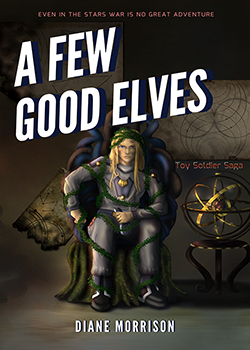
Want to read all of the Toy Soldier Saga fiction, even before the rest of the world does?Subscribe now!
Just How Many Are We Talking About, Anyway?
Assuming that her goblin lover informed her, or she is naturally inclined to expect multiple births, the next question comes as; how many is multiple births? Fortunately for her, we’re not talking six or seven, but most commonly, two, maybe three. Four would be exceptionally rare, and multiple births of five are higher are virtually unheard of. In loose figures, 50% of the pregnancies will result in two offspring, 30% have only one, 15% are of three, and the remaining 5% have four babies. Simple, right? Well, there is a little bit more complication than that. 15% (18 or higher on a D20) of fertilized fetuses will twin. This results in a slightly higher chance in each category of each fetus being actually two fetuses. So where 50% of the pregnancies result in two offspring, 15% of each of those may result in a twin. So, the odds in each multiple category are slightly higher. If you want to get a little more complicated than that, then a realistic number of one in 20 twin zygotes will result in a triple zygote, or triplets. Beyond that the chances of quadruple zygotes, or quintuple, are so exceedingly rare as they should only take place with agreement of both GM and player. To give you an example of the rarity, technically it is possible that rolling randomly one could roll, a litter of four, where all four rolled 18 or higher to be a twin, and then all four rolled natural 20s to be a triplet, and thus that poor woman has four sets of triplets, or 12 offspring. Could be scary, if the chances of that weren’t more than 800 trillion to one. Since there are not 800 trillion goblins, chances are it’s never happened, and if there were 800 trillion goblins, chances are still that it’s never happened. Whether or not these are identical twins is a matter best left between the player of the GM. In humans the chance of monozygotic twins is roughly 1 in 285; whether or not that carries over to goblins? Well, seems reasonable.
Scientific Name
Homo Sapiens Goblinus
Lifespan
75 years
Conservation Status
Goblins are good at surviving. There's no shortage of them in the places where they congregate. Overpopulation can, in fact, be a problem.
Average Height
There are significant variations in goblin height, depending on ethnicity.
Average Weight
Goblin average weight, like their average size, varies significantly with ethnic background.
Average Physique
Goblins were little creatures that cringed whenever an orc spoke to them. They were green in colour and had large eyes and narrow, pointed faces.The dimuniative goblins tend to frail builds, with some significant exceptions. Their hands and feet might appear a bit large for the proportions of the rest of their bodies, if one is more accustomed to a human or elven sense of symmetry.
Body Tint, Colouring and Marking
Goblins are almost always green-skinned, with some notable exceptions. The shade of green, however, ranges from dark forest green to jade, to emerald, to olive, to lime, sage, even chrysoprase, and everything in between. They may have birthmarks in darker or lighter shades of green or even orange.
Hair and eye shades can be truly interesting, and span all colours of the rainbow, with purple usually considered the most attractive.
Related Organizations
Related Ethnicities
Related Myths
Goblins in the Fomorian Military
“Prime yer guns, boys!” Thorgir commanded. The Balorian gun commanders aimed, the ogres loaded, the orcs rammed and sponged, and the goblin ventsmen covered the vent holes while loading, then filled the vents with black powder.
Their cry was answered with a roar and the thunder of war drums. A very large orange-skinned Balorian in red armor bawled out something in Orcish so loudly that his basso voice echoed over the battlefield. The goblins started charging to meet them. The marines hit the goblins like a solar storm. Shrieking in shrill goblin tones and a cry of musical elven voices followed their initial clash. Shaundar tried to see Yathar in the chaos but couldn’t. But the marines kept going and the goblins fell back or were trampled. Blood spattered the ground.Like most other races in the Fomorian Empire, goblin populations are expected to contribute a levy of troops. Whenever possible, they prefer to serve in support positions rather than as frontline soldiers and sailors.
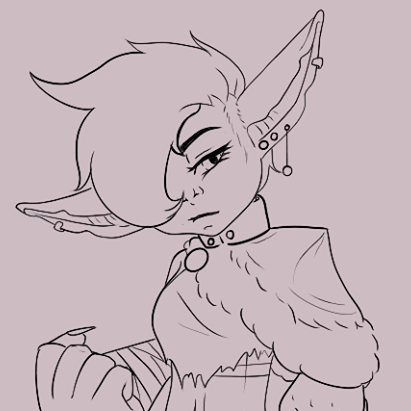
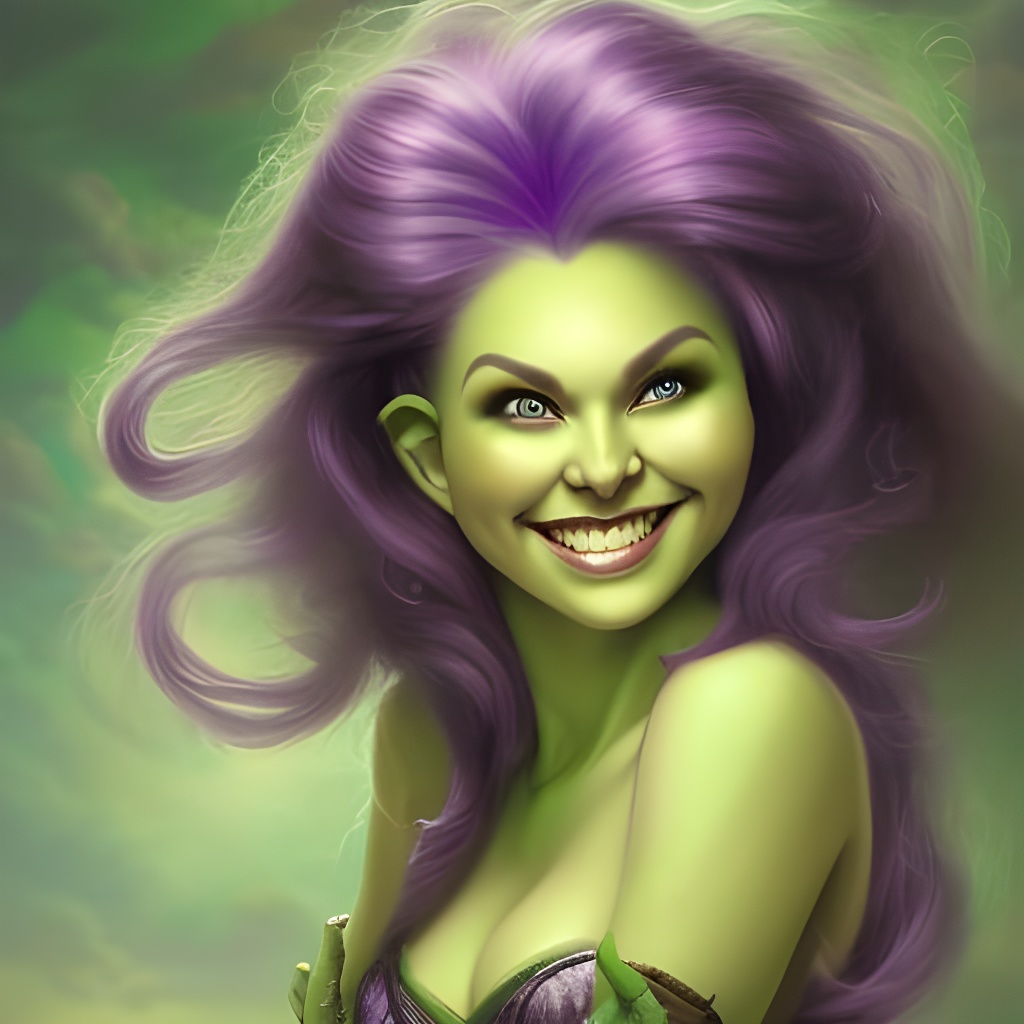
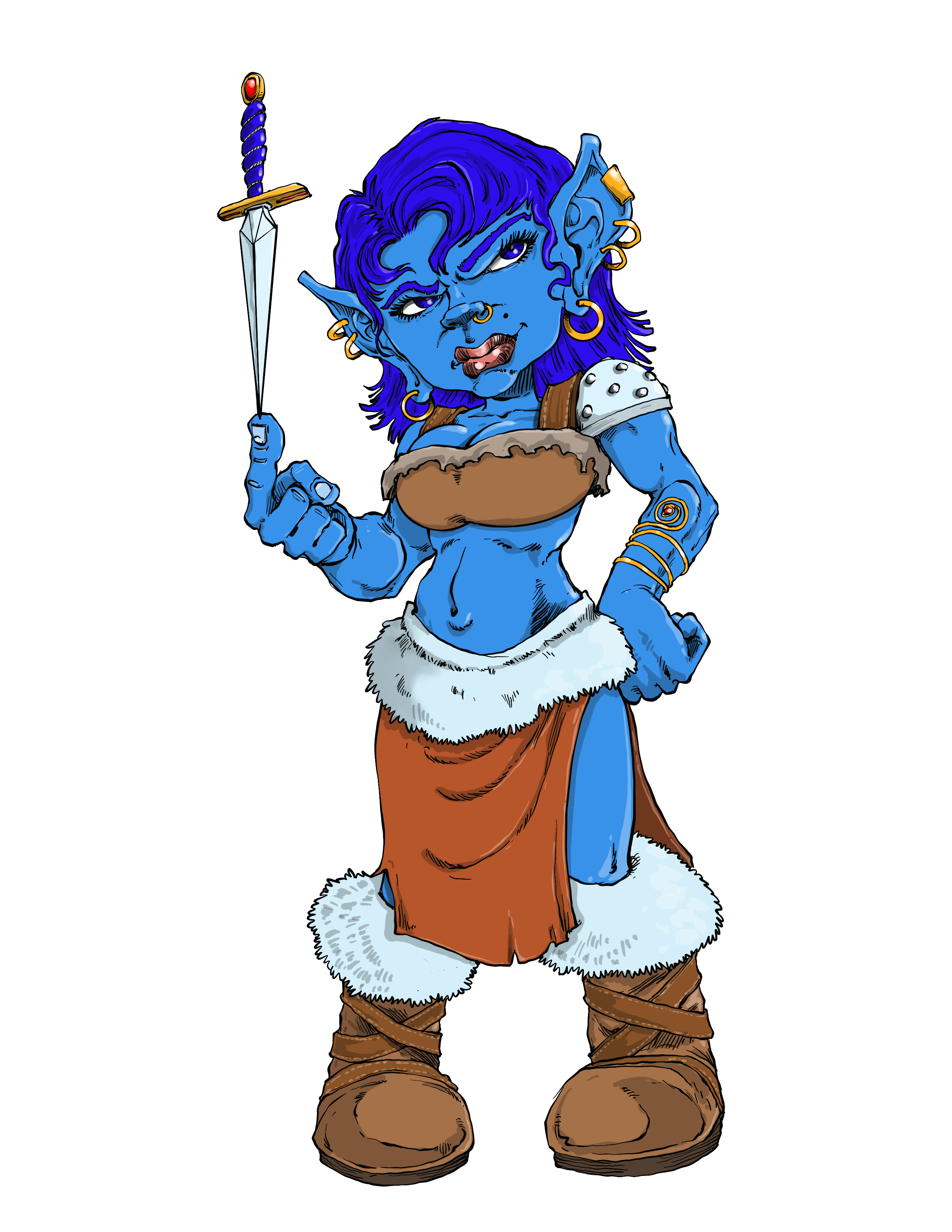

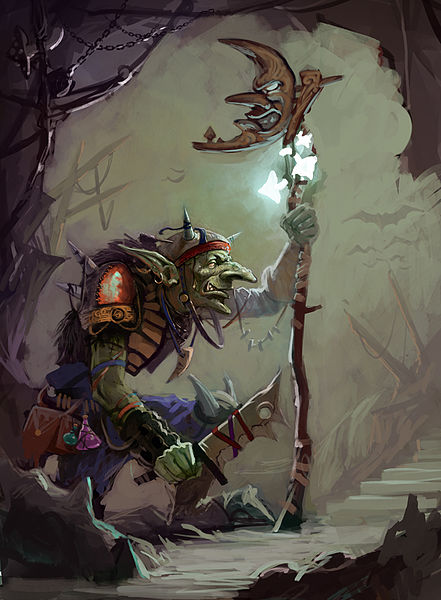
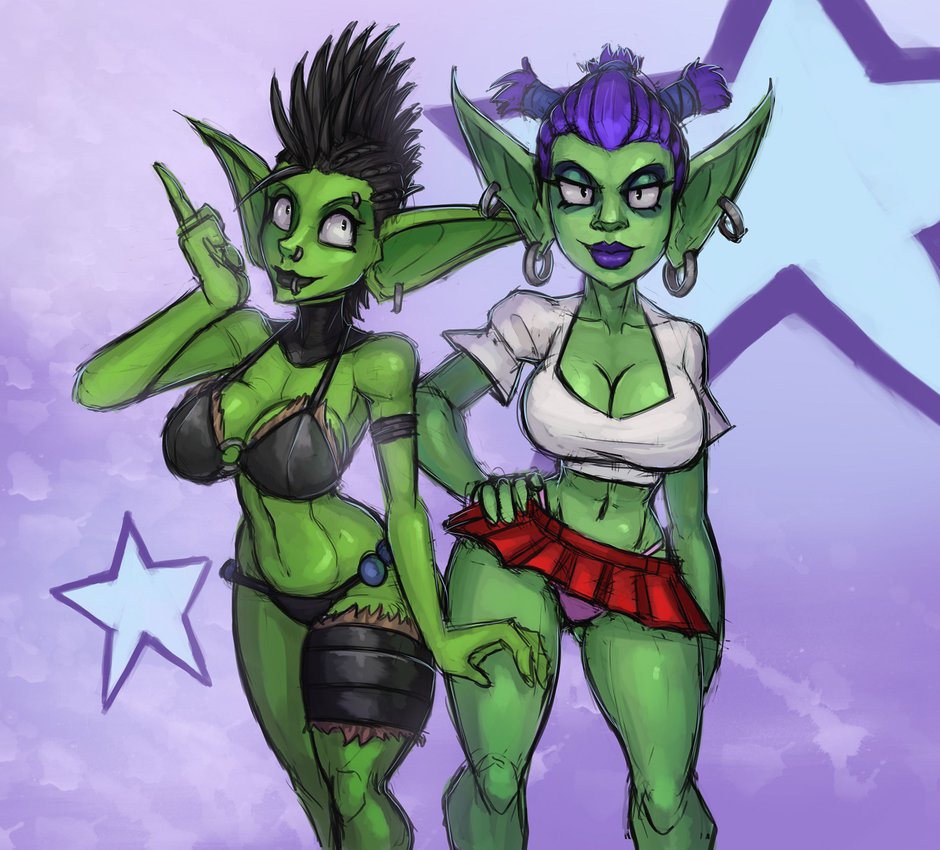
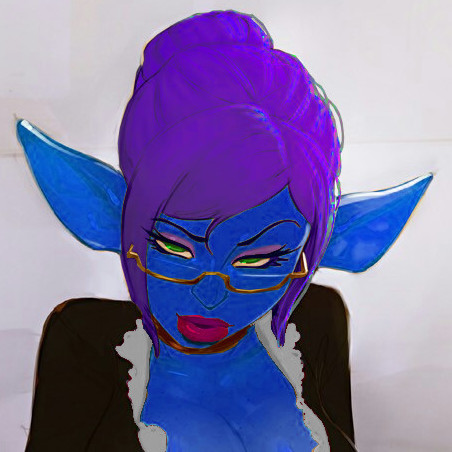
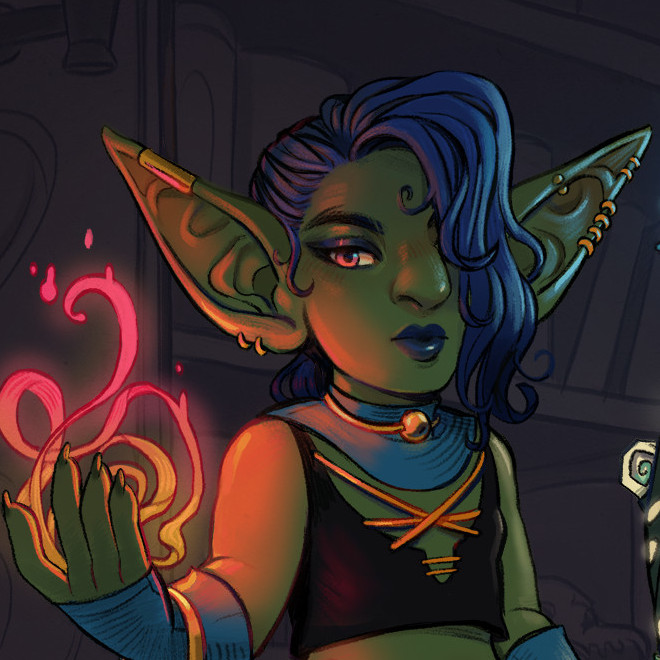
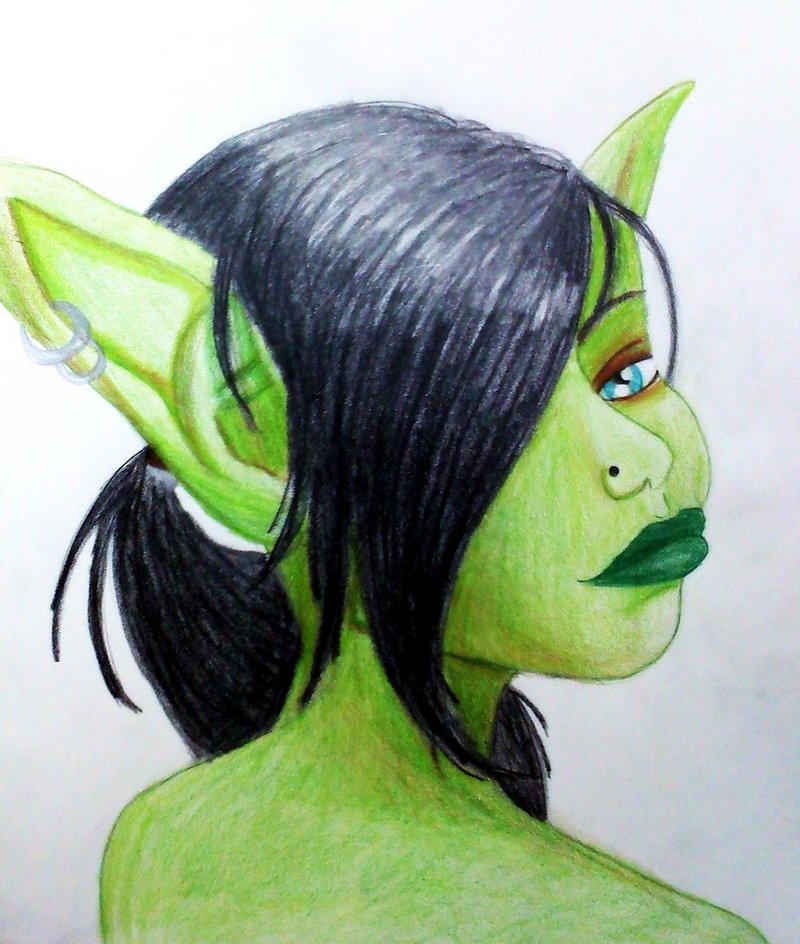
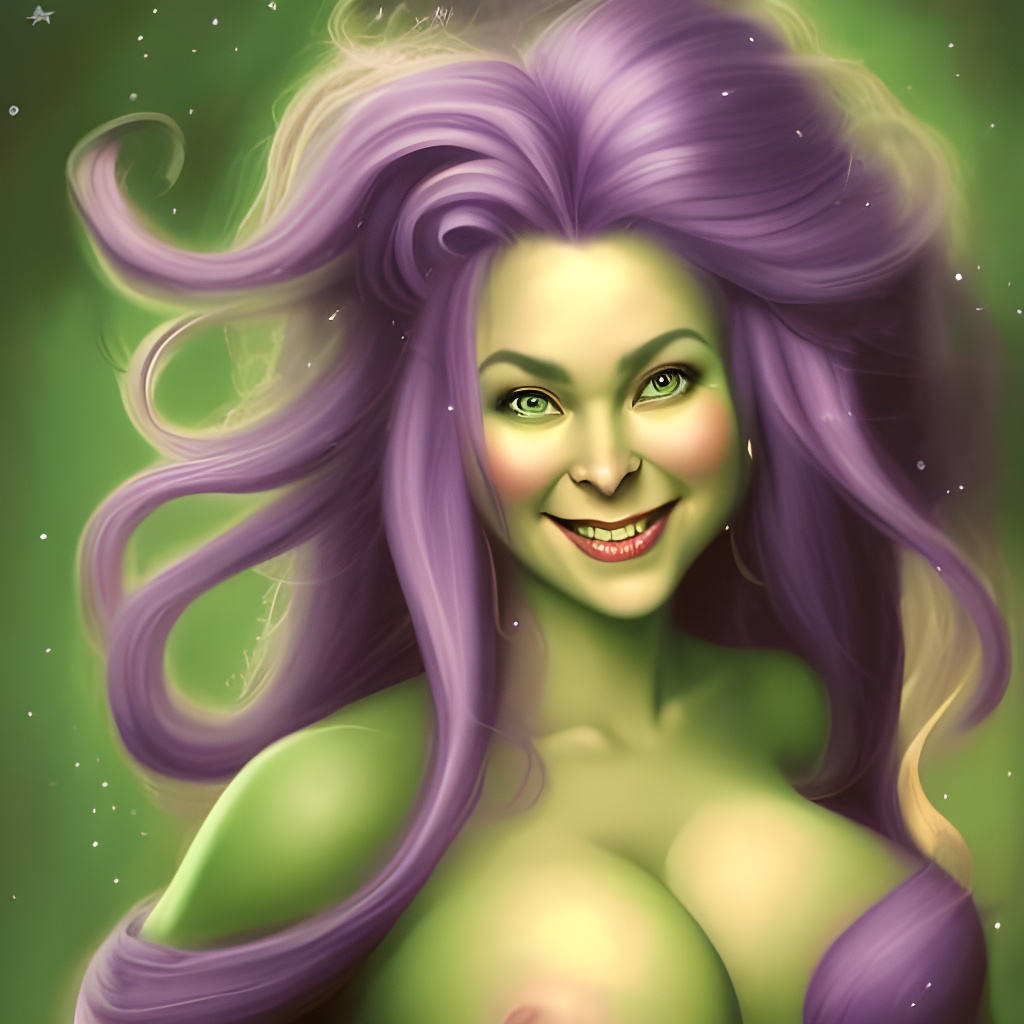
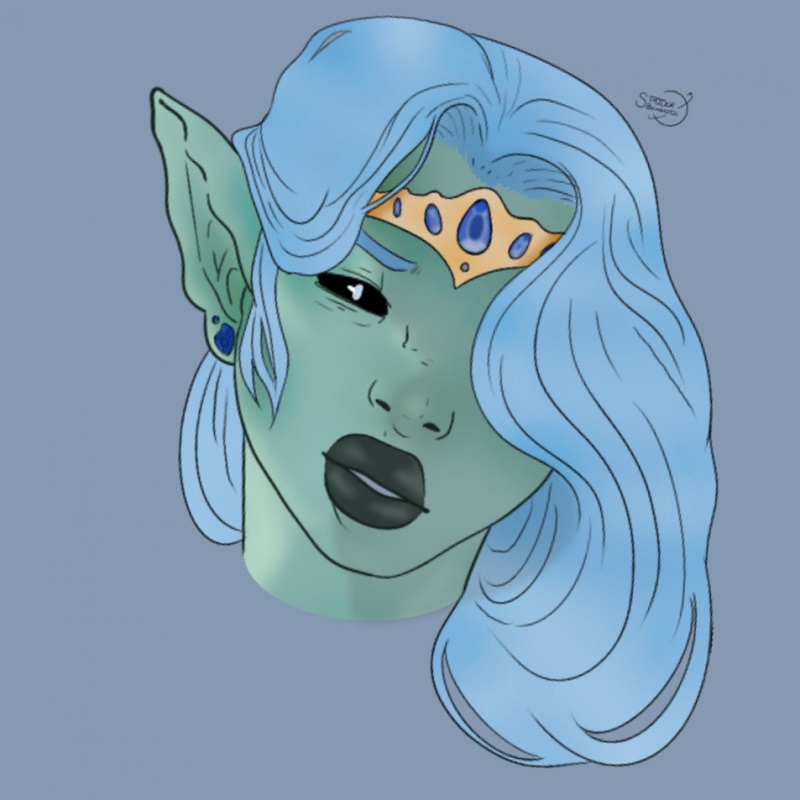
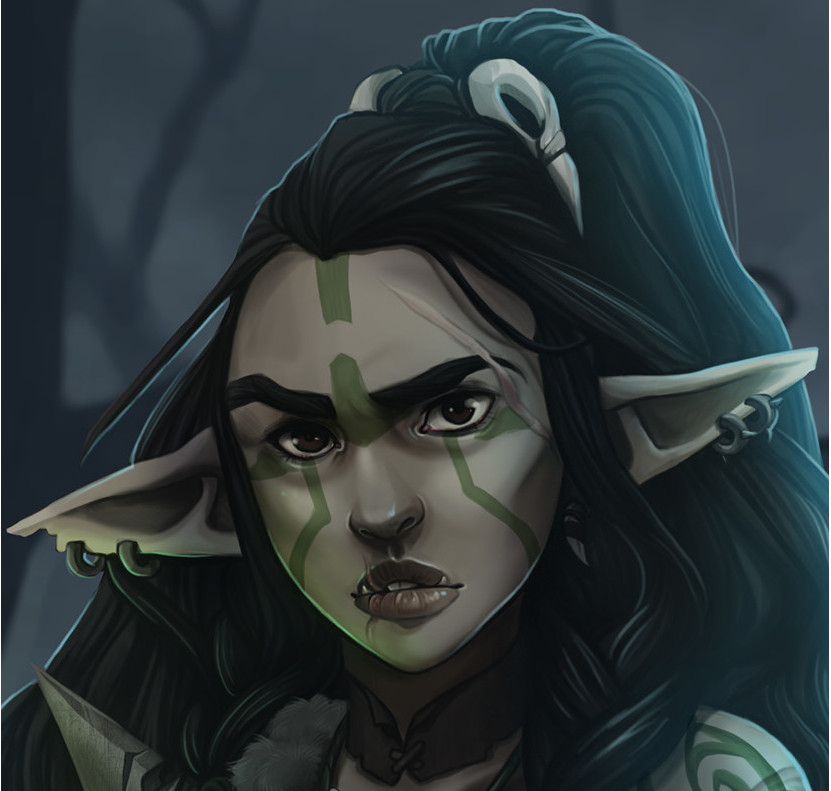
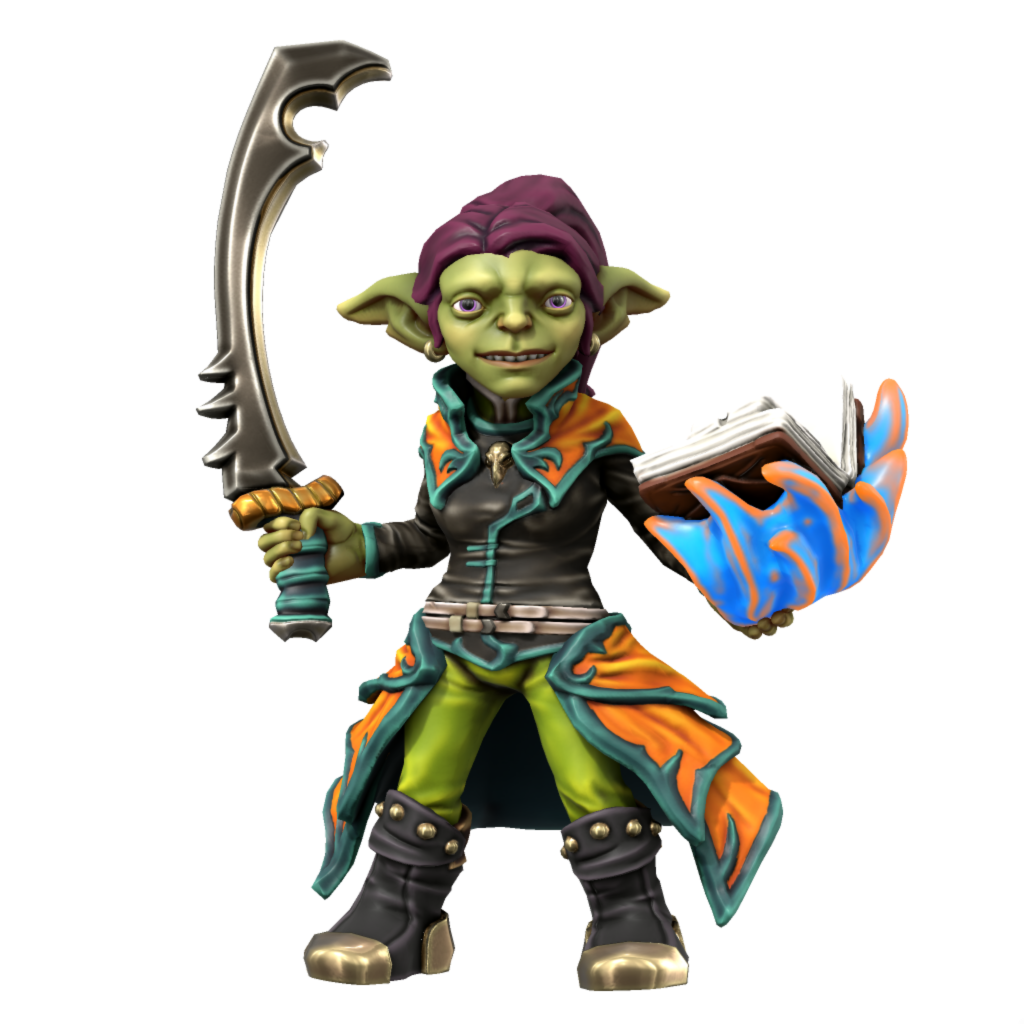
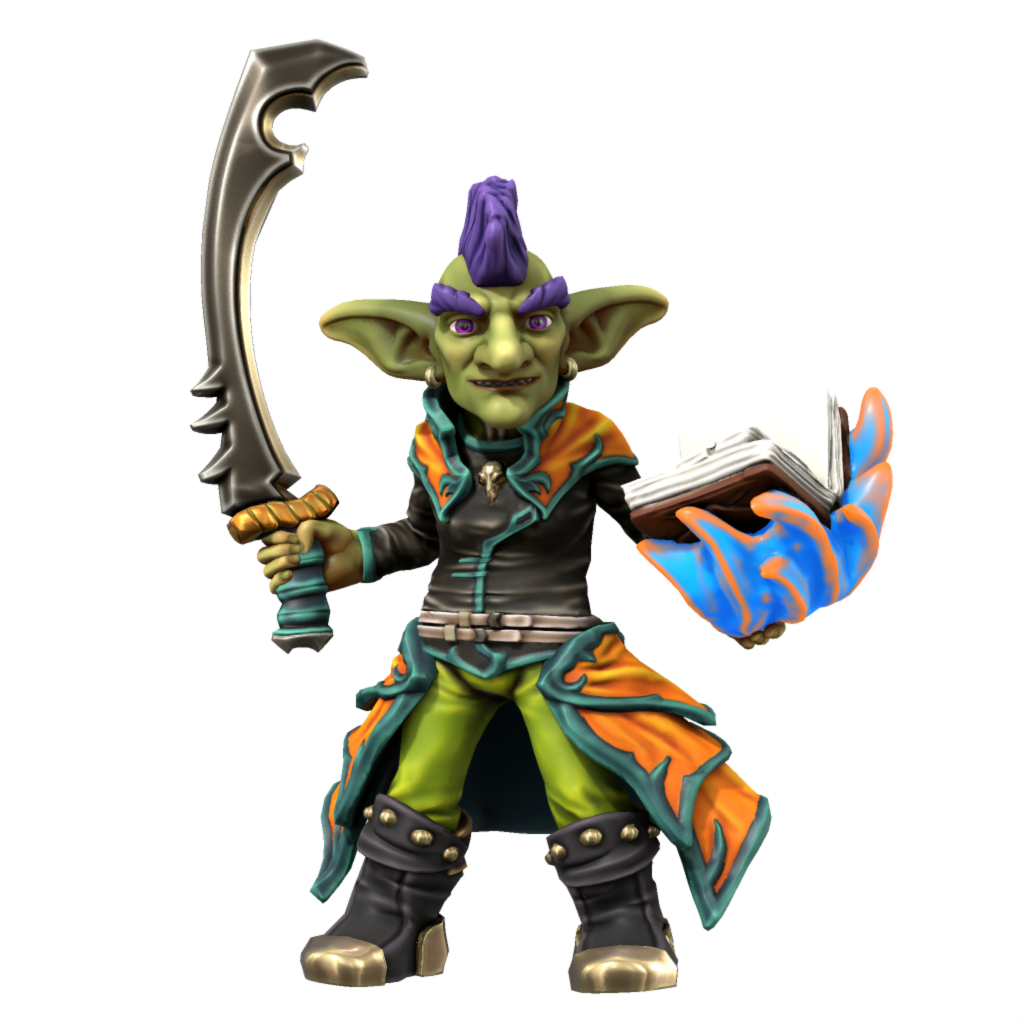


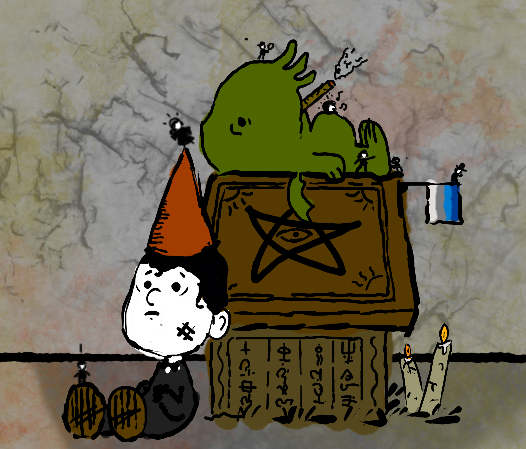
'which is not really surprising, since most male goblins smell bad.' LOL. Really fascinating article. I enjoyed reading this a lot! There's so much detail in every part of this <3